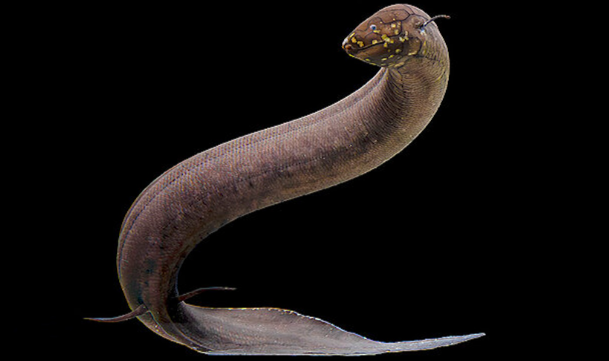Scientists Sequence Largest Animal Genome in Lungfish Study
The South American lungfish, Lepidosiren paradoxa is a unique species found in the stagnant waters of South America. It has gained attention for being a living fossil and possessing the largest known genome of any animal, approximately 30 times the size of the human genome.
Evolutionary Significance
As the closest living relative of the first land vertebrates, lungfish provide valuable insights into vertebrate evolution. Their genetic structure can help decipher how limbs evolved from fins, marking a critical transition from aquatic to terrestrial life. Recent genomic research shows that the lungfish’s genome is approximately 30 times larger than that of humans, with 18 of its 19 chromosomes larger than the entire human genome. This extraordinary size results largely from repetitive DNA elements, constituting about 90% of its genetic material.
Comparison with Other Species
While the South American lungfish holds the record for the largest animal genome, some plants, such as Tmesipteris oblanceolata, surpass it by over 50 times. The previous largest animal genome belonged to the Australian lungfish.
Breathing Adaptations
Lungfish possess both gills and lung-like organs, enabling them to breathe air in oxygen-poor environments. This dual respiratory capability illustrates their adaptation to swampy habitats. The massive expansion of lungfish genomes appears to be linked to a reduced suppression of genomic repetition. Understanding these mechanisms may enhance our comprehension of genome biology and chromosome stability.
Implications for Tetrapod Evolution
Studying lungfish can aid in uncovering the genetic and developmental pathways that facilitated the evolution of limbs and lungs in tetrapods, showcasing the significance of these fish in the broader narrative of vertebrate evolution.
Facts About Lepidosiren paradoxa
- Lepidosiren paradoxa, or the South American lungfish, is an ancient species capable of breathing air due to a modified swim bladder.
- It can survive prolonged droughts by burrowing in mud and entering a state of aestivation.
- This fish has a unique, elongated body with four limb-like fins, resembling amphibians.
- It is native to the Amazon and Congo basins.
- Notably, Lepidosiren possesses both gills and lungs, showcasing an evolutionary link between fish and terrestrial vertebrates.
- Its diet mainly consists of invertebrates and detritus.
Month: Current Affairs - August, 2024
Category: Science & Technology Current Affairs


